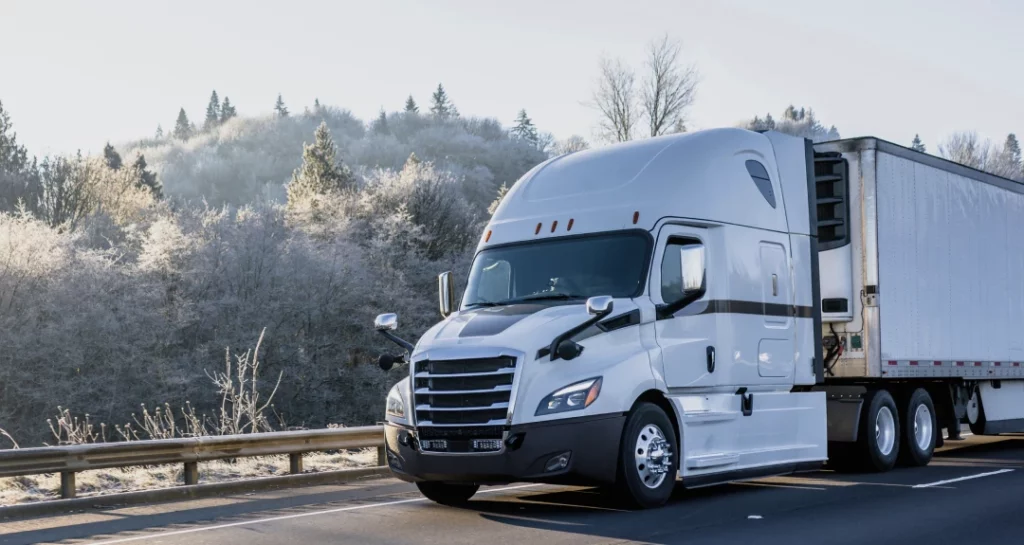Winter Driving Tips for Truckers

For truck drivers, transitioning into winter, a familiar yet icky time of the year, is stressful and perplexing. Rapid temperature change, roads that begin to resemble ice-skating surfaces – all that, doubled by poor visibility and reduced traction, makes it incredibly tough even for seasoned drivers to curb the road.
Operating a truck on a ruthless wintertime road requires in-depth knowledge of the trucking trade as well as dexterity. On top of that, drivers need to be equipped with a wide number of recommendations.
Tip 1: Don’t Rush
Obvious as it might sound, slowing down is the basic solution for a truck driver on a winter road. Unfortunately, drivers don’t follow the fundamental rule and don’t manage their speed based on the conditions of the road. When a driver rides on a road covered with snow, they have to make up for the imperfect traction by decreasing the speed.
Tip 2: Examine the Vehicle
Another critical rule for winter driving is making sure that the truck is ready for the harsh conditions it is to face. Good examination of the vehicle includes checking the tire pressure, antifreeze levels, and engine oil – these are the essentials a driver needs to pay attention to before hitting the road. In addition, truckers can hire a mechanic to have their vehicle inspected to the bone – this is quite a reasonable decision to take since mechanics are professionally trained experts who will ensure the vehicle is ready to drive.
Tip 3: Mind the Tire Spray
Alas, many drivers forget about the tire spray detail. Assessing the road condition is attainable by observing the water that comes off the tires of other vehicles surrounding you. Once you spot that there’s too much water that is being sprayed, then the road is wet. If, on the contrary, you see that the tire spray is not excessive, the road is freezing, and the danger is big enough to be especially cautious.
Tip 4: Give Yourself Some Space
As a rule, the stopping distance on a winter road should be twice the normal stopping distance. On icy roads, the stopping distance has to be 10 times as big as it is on non-icy roads. This means that you need to have enough space between your vehicle and the truck in front of you, which will allow you to have enough room to stop or make a turn in case a dangerous situation comes up. Remember to increase your following distance.
Tip 5: Consider Ample Light
In harsh weather conditions, visibility is extremely bad and tricky. Therefore, drivers need to keep the lights clean and take the snow off the tractor trailers that are all covered in snow and frost. Also, you should switch on the headlines of your vehicle. This smart solution will help other drivers to see your vehicle and be able to keep a proper distance from your truck.
Tip 6: Make Sure Fuel Tanks Are Topped Up
By filling your fuel tanks on a regular basis, you give extra weight over the drive tires, and this is the important step that helps you provide extra traction if needed. If your lug tires are in satisfactory condition and thus help you maintain normal tire pressure, then rest assured the traction will be good, and your challenging winter journey will be safe and joyous in the end.
